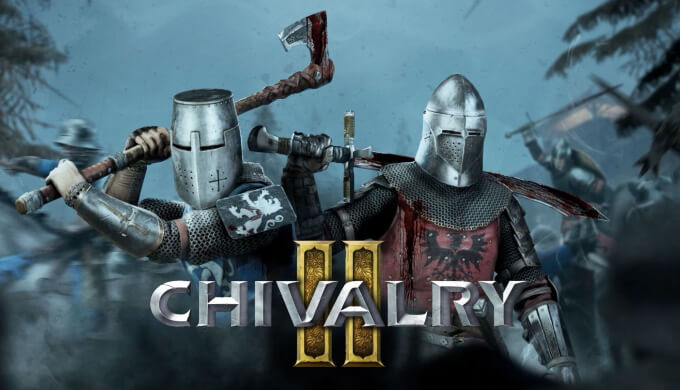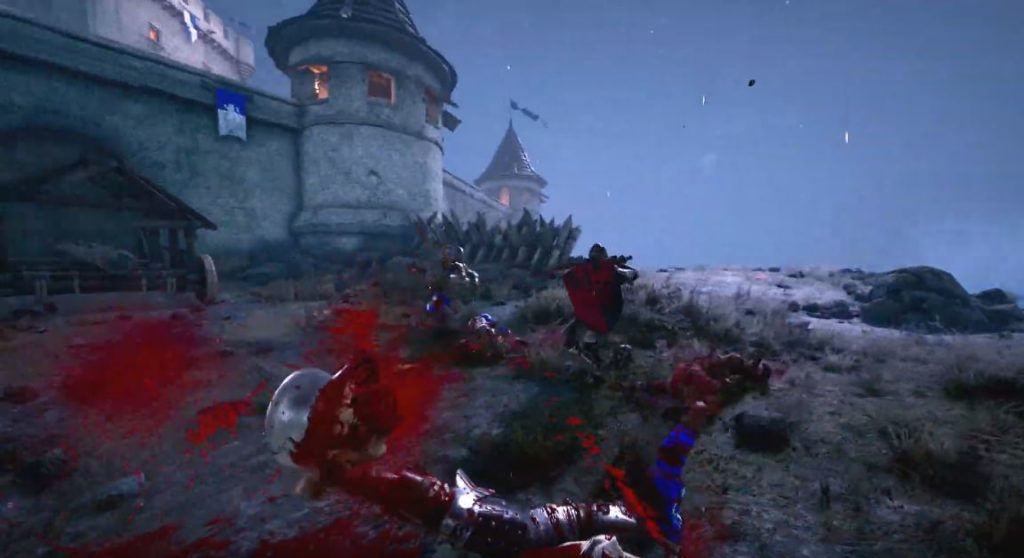

The cosmetic system is tied to leveling and can use either in-game coins that you earn for every match or a paid currency if you don’t have the patience. I’ve never once felt like a swing or block missed when it should have hit but lag got in the way.

Server performance has been flawless for me, which is key in such a melee intensive game.

Thankfully, I’ve had zero issues outside of an hour or so around launch where matchmaking was having major issues. This is a game that is all about chopping heads off, picking them up, and throwing them at people and the composer knew that putting this big orchestral music behind it all would only make things funnier.ĭuring the beta of the game, I had some issues with the servers and de-sync. The soundtrack plays things seriously which helps lend into the absurdity of it all. The sound of the game is top-notch as it leans heavily into a Monty Python-esque level of over-the-top war cries, piteous howls of pain, and meaty thwacks as you chop more limbs off than the Black Knight could ever dream of.
#CHIVALRY 2 GAME PASS UPDATE#
Models are solid, texture work is generally of high quality, and the promised ray-tracing modes in a future update have me excited. Performance wise the game appears to be running at a high resolution and a locked 60 frames per second. The maps aren’t huge but they’re decent sized, and the quick loading is much appreciated.
#CHIVALRY 2 GAME PASS SERIES#
Playing on a Series X as well I rarely spent more than a few seconds loading in to a match. Matches can be anywhere from 5 to 25 minutes long, and outside of class changes respawning is generally quite quick. The bots are useful to fill things out and make them feel more large scale, but the AI rarely gets a kill. I have found that it is reasonably well balanced, though a few matches were a bit heavy on human vs bots on each side, with the human heavy team having a decided advantage. The crux of each map is based around the fictious battles between Agatha and the Masons, and each has a story to tell in the objective modes. The balance for archers is found in a limited ammo system that forces them to either retreat to replenish their arrows or forces them forward to fish them out from their fallen foes. Properly feinting an attack to find an opening on your opponent or dragging your slash attack so that it hits everyone around you is incredibly satisfying. Learning how all these systems play off one another is the heart of the game. For instance, the first version of the Knight blows on a trumpet to start healing any allies in range, while the second plants a banner on the ground that sends out a constant healing pulse over a longer period, but it can be destroyed. The key to each class though is down on the D-Pad, this activates a timer-based special ability that varies per sub-class. The A button is a sidestep in the 4 main directions, B kicks your opponent to knock them off balance, X is for interactions, and Y is your special stamina draining heavy hit. Right Trigger is your sideways slash, Left Bumper is an overhead chop, Right Bumper is a forward thrust, Left Trigger is how you block. There is an excellent tutorial that gets you through all the basics of how combat works. My favorite is the knight, who focuses on a high health pool due to his heavy armor and big, slow, powerful weaponry. It’s a smart leveling system that encourages trying out different setups and things move fast enough that it never felt burdensome. All but one subclass for each is locked as you start things out and as you play each class and use each weapon you’ll level up everything independently. Each side has 4 classes who then have 3 subclasses of their own. Agatha clad in blue, and the Masons in their blood red. You have two warring factions going at it over a variety of map and game types.


 0 kommentar(er)
0 kommentar(er)
